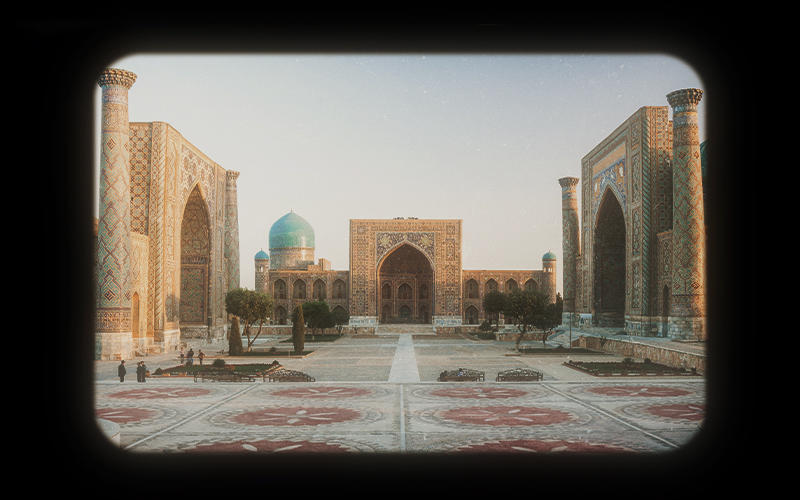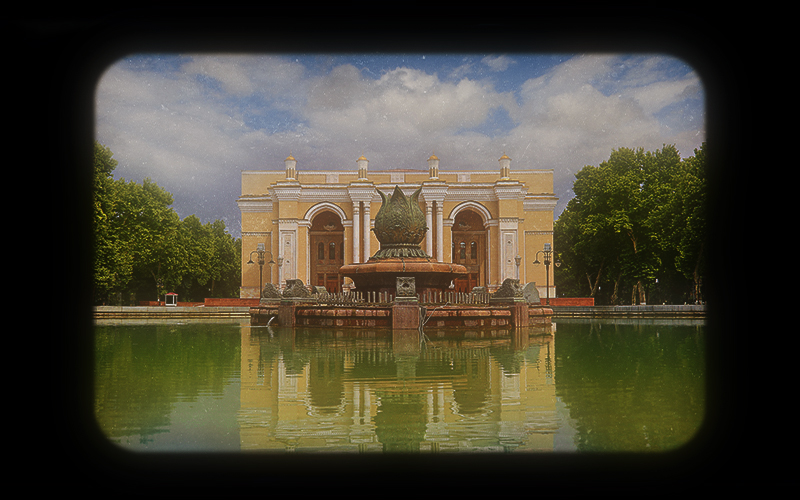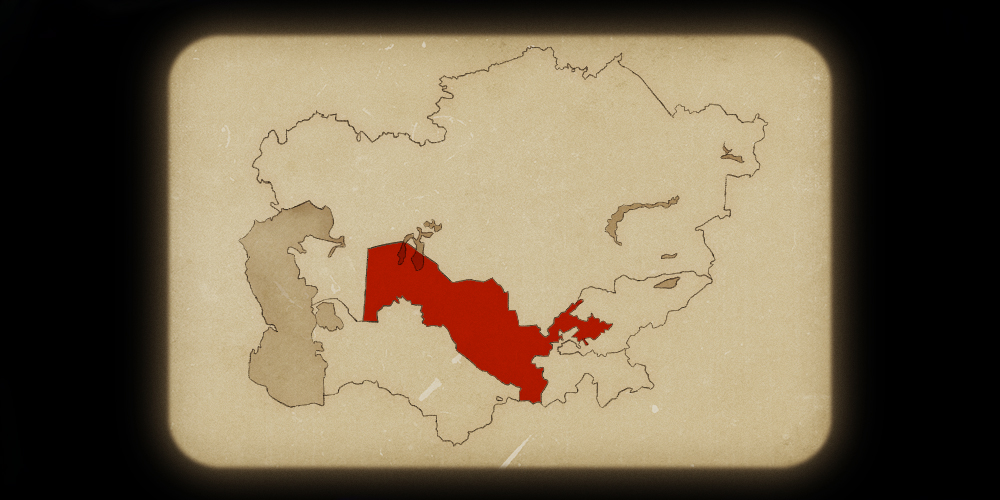To the Ends of the Earth: A Unique Perspective
Imagine a world in which the essence of a nation is defined by its portrayal on the silver screen. Now, what if said nation has no portrayal at all to go by? Uzbekistan has long suffered from cinematic anonymity. The vast sand dunes of the Kyzylkum Desert, the lush Fergana Valley, the majestic peaks of the Tian Shan Mountains have rarely served as backdrops for filmmakers looking for evocative scenery; the haunting landscapes surrounding the Aral Sea, the ancient cities of Samarkand and Bukhara renowned for their stunning Islamic architecture, the tranquility of the Charvak Reservoir — seldom perform as extras and yet deserve more roles as the scene-stealing setting in global motion pictures. International filmmakers have long enjoyed filming in other exotic locations, whether that be in South, East, or Southeast Asia. Uzbekistan, and by extension, Central Asia, can and should provide another avenue through which they can explore their stories. With the collapse of the Soviet Union, filmmakers are beginning to see its cinematic worth.
The 2019 film To The Ends of the Earth, directed by Kiyoshi Kurosawa, is a Japanese-Uzbek co-production made to celebrate the 70th anniversary of the Navoi Theatre in Tashkent, Uzbekistan. It’s about a Japanese journalist, Yoko, who travels to Uzbekistan with her crew to film a program about its culture. Kiyoshi Kurosawa is a director known for his horror films such as Cure and Pulse, so it may be deemed atypical for him to engage with a pure drama, but he translates his horror skills to intensify the isolation Yoko feels in a foreign country.
Uzbekistan, then, turns out to be an ideal location as the stunning Silk Road architecture of Samarkand contrasts with the modernity of Tashkent. Everything was fresh, Kurosawa said of filming in Uzbekistan, and the relaxed shooting regulations let him make full use of the locations. Even in the first scene, Yoko’s isolation is palpable. Kurosawa frames the camera behind her shoulder while her male co-workers are discussing where to position the camera in the background of the shot, emphasizing her lack of involvement. This serves as an evocative commentary on Japan’s gender politics, as the World Economic Forum’s 2023 report on gender equality ranks Japan a lowly 125th out of 146 nations. Even though Yoko is the face of the program and is what viewers see on television, she gets no say.
The loneliness Yoko feels is also attributed to being in Uzbekistan. Initially, this is expressed in her ignorance of what it means to exist outside of her land. To Yoko, this is simply a job, and she treats Uzbekistan as if it were Japan, her Japan. It is when she is directly confronted that the film takes a stark turn: “Our customs aren’t like yours,” a local tells her. Not knowing the language and relying on a translator for all interactions, she fears Uzbek people: She is terrified of the motorist who picks her up to take her to her co-worker. He tries to explain “I’m here to pick you up!” but as she cannot understand him, she is intimidated. Kurosawa himself hadn’t visited Uzbekistan before writing the script as the idea was brought to him as a commission from a producer. He reflects this unfamiliarity with the culture through Yoko’s reaction to her surroundings.
Yoko’s perception of her native self within this foreign land strengthens as she finds herself located within large, empty architecture that makes her feel trapped. Kurosawa chooses not to subtitle the Uzbek dialogue spoken throughout the film, and this decision, combined with the use of a style transported from his horror films (dramatic lighting, wide and empty frames, eerie silences), makes the viewer resonate with Yoko’s further. That is, of course, assuming you don’t know Uzbek!

The famous Registan Square in Samarkand, Uzbekistan. In the film, Yoko drives past it.
Films about travel often show it as a positive experience — something thrilling and life-changing. Very few capture the realities of travel like Kurosawa’s film. To The Ends of the Earth captures the anxiety of not being able to speak to family back home because of time differences; it also portrays how something can go wrong and you can’t fix it because you don’t speak the local language. When they film the program, Yoko puts on an enthusiastic and happy masquerade, which serves in contrast to her anxious, introverted personality. She represents the traveler in all of us, and the film captures the fear of the unknown.
However, when her anxiety is at its strongest, Yoko realizes that her anxiety is not located in Uzbekistan but in her perception of it. Even when we can’t communicate with each other, we have a shared humanity and a desire to help each other and share our cultures. There are sweet moments, like when her Japanese crew try Uzbek plov and deem it delicious. At the end of the film, Yoko understands that even though Japan and Uzbekistan have ostensibly distinct cultures, there is a history between them. The USSR deported 25,000 Japanese prisoners of war to Uzbekistan after World War II, and together they built the Navoi Theatre that remains today in Tashkent. This film involves a lengthy monologue about the theater itself, something presumably stipulated in the production contract. Kurosawa incorporates the Navoi into the storyline, and puts his signature style on it. As the film explores the intersection between the two cultures, it shows a country’s identity also partly consists of its interactions with other nations. Uzbekistan itself has mixed its Turkic and Persian history to create a unique identity.

The Navoi Theater in Tashkent, Uzbekistan.
This story would hardly be as effective had it been set in, say, France or Spain, which most are plenty acquainted with. The fact that it’s Uzbekistan is what makes Yoko’s journey so evocative, as she traverses lands as unfamiliar to her as the average viewer.
The Global Perception of Central Asia
When Uzbekistan is referred to in film, the country is rarely the principal focus of the story, and the connotations are often negative. Take the Hollywood action movie 6 Underground — set in the fictional country ‘Turgistan’ which is said to border Uzbekistan, it is shown to be a totalitarian dictatorship. In addition, 12 Strong details the U.S.’s war against the Taliban, and the soldiers are shown to travel through Uzbekistan to get to Afghanistan.
This is, of course, unproductive for the country’s image. The importance of cinema on cultural perceptions mustn’t be understated, as nowadays many of our biggest cultural assumptions originate from films. They could be as inoffensive as someone not from the U.S. assuming high schools to be divided into exaggerated cliques, like those in The Breakfast Club and Mean Girls, when they can’t be neatly reduced in such a way.
The USSR, with its prestigious Mosfilm studio, put a big emphasis on its cinematic industry. It even set up a studio for each of its Central Asian states, including Uzbekfilm. In the region, many of its films, such as Shumbola, enjoyed popularity, but none of them have a reputation worldwide. Why is this? Thirty-two years after the five Central Asian countries of Uzbekistan, Kazakhstan, Tajikistan, Kyrgyzstan, and Turkmenistan appeared on the world map, little of the region has been portrayed in film. Countries associated with the -stan suffix are perceived as dangerous or sinister. However, times are changing, and with the increased availability of platforms for people to make their voices heard comes natural diversity. On September 19, 2023, U.S. President Joe Biden hosted the heads of state of the five Central Asian nations in New York City — a clear sign of the increased demand for partnership with Central Asia. This demand is taking shape not only in politics but in media too, and we can look to Japan to exemplify it.
The Future Potential for Cinematic Representations
Today, coverage and distribution of Central Asian cinema remains negligible. I hope that as the region continues its crucial period of development, its media can also flourish so that future depictions don’t rely on vague prejudices. Historical ties such as those explored in Kurosawa’s film are an excellent avenue for fostering connections between cultures, but the existence of such ties isn’t necessary either.
Just as Hollywood location scouts might take their crews to shoot in Canada or Europe, Central Asia, too, can serve as one of the most exciting filming locations in the world. Ancient cities like Khiva and Bukhara, as well as lush mountain ranges like the Pamir Mountains, are evidence of this. With the increasing popularity of non-English language films in English-speaking countries, the opportunity to showcase the more obscure parts of the world through the cinematic medium has never been more available. When time has passed, our films will serve as relics of the cultures they represent and shape the public’s perception of them.
What’s important to Kurosawa’s film is that if one removes the context, the film’s thesis remains largely unchanged; we cannot change the circumstances of our lives nor the events that have led up to this moment, but we can change the perspective we see them through. It invites us to challenge our prejudices and embrace the intersection of cultures that make our world so diverse.•
Source images courtesy of Dudarev Mikhail, MehmetOZB, Jakkapan, Ivan,
mangpoor2004, and Iryna via stock.adobe.com.




